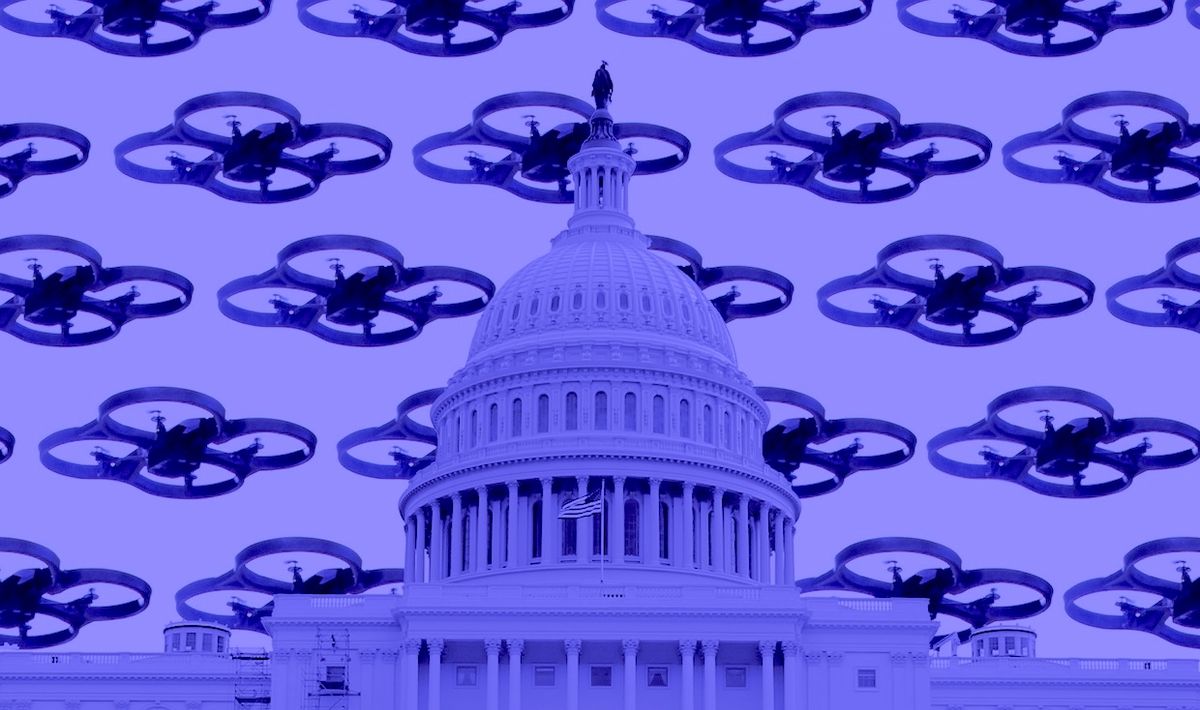The laws governing the use of drones in the United States are changing so fast it can be hard to keep up. But I’d like to explore here some proposed drone rules that never went into effect because the legislation that described them, Senate bill 2658 (the Federal Aviation Administration Reauthorization Act of 2016), was never passed.
Why care about rules that didn’t become law? It’s my theory that although the legislation died in Congress last year, the people championing various parts of it are still around and may yet influence future laws. So an examination of the ill-fated legislation could provide a window on what the future holds for drone operators.
S. 2658 is interesting for a number of reasons, but for now let me focus on five key things.
1. Micro Drone Category
First, the bill describes a “micro” category for the regulation of drones that weigh less than 2 kilograms (4.4 pounds). This would include virtually all toys and even serious drones that aren’t too large, including the DJI Phantom, probably the most popular consumer drone in existence.
According to the bill, anyone could operate such a micro-drone without having to obtain a remote-pilot certificate. There would be certain limits on their operations—no flying over 400 feet, for example—but none of the restrictions are very onerous. This change would have done away with the distinction the FAA now makes between hobby and commercial use of small drones. That is, the proposed micro-drone rules would have allowed flights, even for commercial purposes, without the operator having to be a certified remote pilot.
2. Certification-Lite for Drones
S. 2658 also contemplates what it calls “consensus aircraft safety standards,” or what might be considered certification-lite for drones. These small machines wouldn’t be subject to all the scrutiny of full-size aircraft, but there would a process in place for manufacturers to self-certify that their creations meet certain safety requirements.
3. FPV Redefined
Another interesting provision of the failed legislation was its rules for modelers. One of those proposed rules would have reversed the FAA’s 2014 “interpretation,” which prohibits FPV flight by defining “visual line of sight” as meaning that the operator needs to keep his or her eyes directly on the model aircraft. S. 2658 instead says that the model aircraft is “not flown beyond visual line of sight of persons co-located with the operator or in direct communication with the operator.”
I and other FPV enthusiasts would have welcomed such a statement in the law. Instead folks like me have to get a remote-pilot certificate to be sure that they aren’t breaking any rules when they fly.
4. Aeronautical Knowledge Test
But another change proposed in this section would probably upset most modelers, who would be required to pass some sort of “aeronautical knowledge and safety test,” administered online by the FAA.
S. 2658 says further that the FAA may waive the testing requirement when the model weighs less than 0.55 pounds—that is, when it’s firmly in the harmless-toy category. But the fact that the language says “may waive” is a little disconcerting, as, technically, it would have allowed the FAA to demand people get tested and registered to fly paper airplanes.
5. Drones Underground. Huh?
The final aspect of the proposed legislation that raised my eyebrows was a section titled, “Treatment of unmanned aircraft operating underground.” Huh? Underground? I didn’t know anybody flew drones underground.
It appears that somebody must be contemplating subterranean flights, presumably in support of mining operations, and doesn’t want the FAA to interfere. This very short section reads, “An unmanned aircraft system that is operated underground for mining purposes shall not be subject to regulation or enforcement by the Federal Aviation Administration under chapter 448 of title 49, United States Code.” I guess that would still leave the FAA room to make some rules if somebody were to try to fly drones underground for some purpose other than mining (spelunking or search and rescue, maybe?).
So in an alternate universe where S. 2658 had become law, I’d be able to fly FPV and could operate a microdrone for commercial purposes without a remote-pilot certificate, though (oddly) would have to pass a test to fly the same drone for fun. And, unless I’m using my bat-chaser 3000 glow-in-the-dark quadcopter specifically for mining, I’d be subject to FAA oversight.
All in all, I think I can understand why this bill was never passed.
Photo-illustration with modified images from Elvert Barnes and John Mills via Flickr (CC BY-SA 2.0)
David Schneider is a senior editor at IEEE Spectrum. His beat focuses on computing, and he contributes frequently to Spectrum's Hands On column. He holds a bachelor's degree in geology from Yale, a master's in engineering from UC Berkeley, and a doctorate in geology from Columbia.



